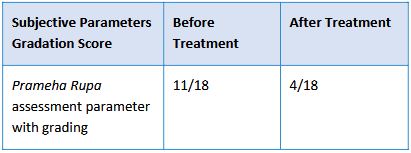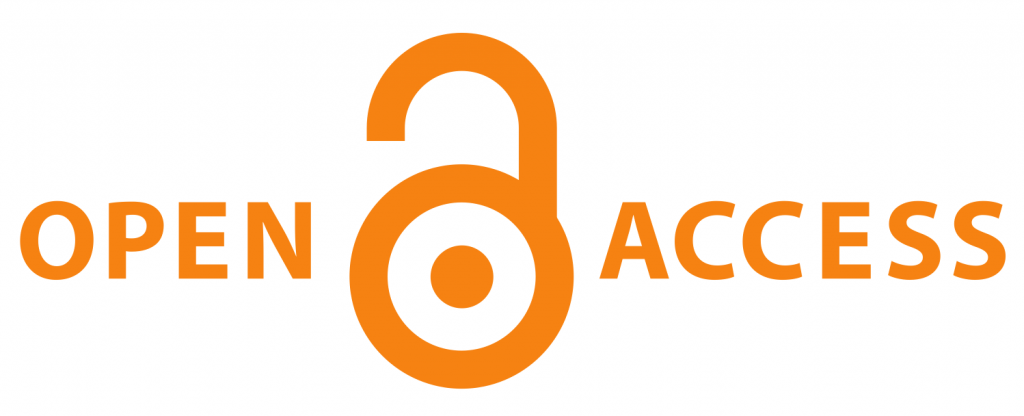An Integrative approach in the management of Uncontrolled type 2 Diabetes Mellitus w.s.r. to Sthula Madhumeha: A Case Report
DOI:
https://doi.org/10.21760/jaims.9.11.34Keywords:
Type 2 DM, Diabetes, Ayurveda, Panchtiktapanchaprasrutik Basti, Sthula-Madhumeha, Vasantkusumakar RasAbstract
Introduction: Diabetes is a disease of worldwide importance and a major public healthcare concern owing to its associated morbidity. Clinically Type 2 DM resembles Madhumeha with prevalence in India was 9.6% in 2021.This case report describes an integrated approach for the treatment of uncontrolled diabetes mellitus. Main clinical Findings: A 58-year-old male patient complained of polyurea, polyphagia, polydipsia, tingling, and severe burning in all 4 limbs, fatigue, and constipation. Investigations shows FBSL level of 247mg/dl, PPBSL 415mg/dl, and HbA1C 8.9%, BMI 28.6kg /m2. Diagnosis: Sthula-Madhumeha (Type 2 Diabetes Mellitus). Interventions: Treatment includes, Panchatiktapanchaprasutika Basti for consecutive 15 days (Kalbasti Krama), local therapy, oral medications and lifestyle modifications. Outcome: Patient showed marked reduction in FBSL reduced to 82mg/dl PPBSL to 184mg/dl, and HbA1c to 6.8% after 3 months. Patient exhibited significant results in clinical signs and symptoms. Conclusions: It can be concluded that Ayurvedic intervention can be a complimentary treatment in uncontrolled DM.
Downloads
References
World Health Organisation. Diabetes Overview [Internet]. 2023 [cited 2024 Feb 5]. Available from: https://www.who.int/news-room/fact-sheets/detail/diabetes
Kumar A, Gangwar R, Zargar AZ, Kumar R, Sharma A. Prevalence of diabetes in India: a review of IDF Diabetes Atlas 10th Edition. Curr Diabetes Rev. 2024;20(1):105-14. doi: 10.2174/1573399819666230413094200.
Li M, Chi X, Wang Y, et al. Trends in insulin resistance: insights into mechanisms and therapeutic strategy. Signal Transduct Target Ther. 2022;7(216). doi: 10.1038/s41392-022-01073-0.
Hollander P. Anti-diabetes and anti-obesity medications: effects on weight in people with diabetes. Diabetes Spectr. 2007;20(3):159-65. doi: 10.2337/diaspect.20.3.159.
Sharma AR. Sushrut Samhita. Varanasi: Chaukhambha Pratishthan; 2017. Nidansthana, Adhyay 6/4.
Kale VS. Charak Samhita. Chaukhambha Sanskrit Pratishthan; 2013. Sutrasthan, Adhyay 21/21-23. p. 117.
Jirankalgikar YM, Ashok BK, Dwivedi RR. A comparative evaluation of intestinal transit time of two dosage forms of Haritaki [Terminalia chebula Retz]. Ayu. 2012;33(3):447-9. doi: 10.4103/0974-8520.108866.
Geng J, Ni Q, Sun W, Li L, Feng X. The links between gut microbiota and obesity and obesity related diseases. Biomed Pharmacother. 2022;147:112678. doi: 10.1016/j.biopha.2022.112678.
Mangal A, et al. Evaluation of Gokshuradi Guggulu and Guduchi Churna in the management of Type II Diabetes Mellitus (Madhumeha). J Res Ayurvedic Sci. 2019. doi: 10.5005/jras-10064-0082.
Pandharkar G, Rasal P. Clinical efficacy of shodhanottara shamana chikitsa in type II diabetes mellitus – an exploratory study. Ayurlog. 2018;6(4):1-10.
Silva PASN, Arawwawala LDAM, Kumari MWSJ, Galappatthy P. Effect of Curcuma longa L. and curcumin on diabetes and its complications: a review. J Ayu Herb Med. 2021;7(2):109-18. doi: 10.31254/jahm.2021.7209.
Kumari S, SD L, B S, Khanal S. Efficacy of Integrated Ayurveda treatment protocol in Type 2 Diabetes Mellitus - A case report. J Ayurveda Integr Med. 2022;13(1):100512. doi: 10.1016/j.jaim.2021.08.005.
Gaidhani SN, et al. Antidiabetic activity of Vasant Kusumakar Ras in streptozotocin and high-fat diet induced Type 2 Diabetes Mellitus in Sprague Dawley rats. J Nat Remedies. 2023;23(2):521-36. doi: 10.18311/jnr/2023/32054.
Tamoli SM, et al. Vasant Kusmakar Ras, an ayurvedic herbo-mineral formulation prevents the development of diabetic retinopathy in rats. J Ayurveda Integr Med. 2020;11(3):270-6. doi: 10.1016/j.jaim.2020.02.002.














